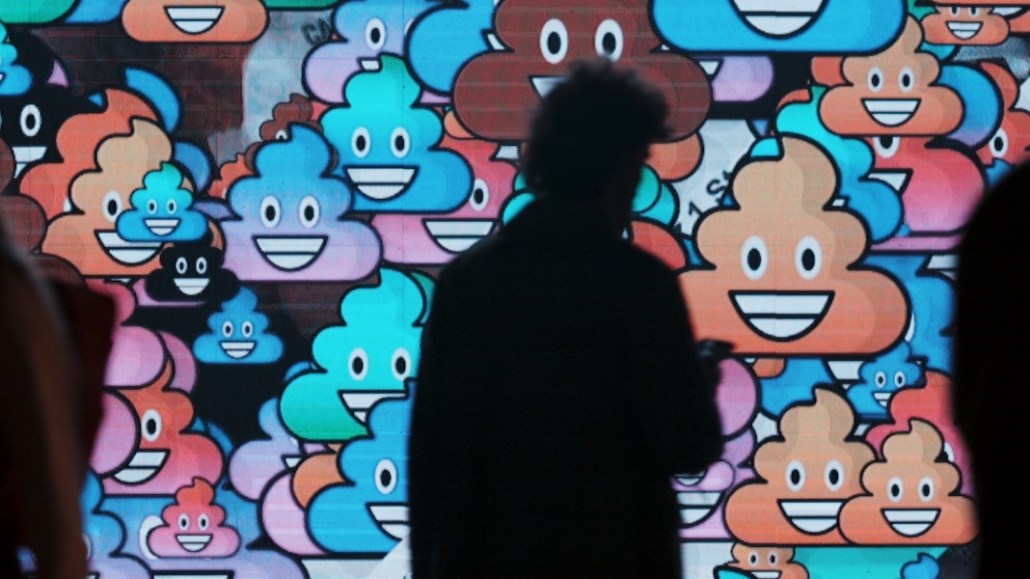Connect with execs from The New York Times, TIME, Dotdash Meredith and many more
The Wall Street Journal takes aim at social media ‘noise’ in new ad campaign

The Wall Street Journal’s new ad campaign skewers the downsides of social media — everything from mindless memes, misinformation and distraction — to urge people to focus on quality media like, well, the Journal.
The “Read Yourself Better” campaign, which debuted on Monday, directly addresses the discontent and confusion surrounding media today thanks to the rise of social media platforms and often, the viral spread of misinformation. The campaign, aimed at people 25 to 44, includes TV, digital and print. The Journal said the effort will be its biggest ever, but it would not cite specific spending plans
The opening TV spots, available in 15- and 30-second versions, will run on linear and OTT TV across various networks including CNN, NBC and MSNBC in the U.S. and on the BBC in Canada, Europe, the Middle East and the Asia-Pacific region. Digital ads will run on Display, YouTube, Facebook and Twitter. Out-of-home ads will run in the New York, Los Angeles, Denver and Philadelphia areas across 1,275 placements with more than 140 million impressions. The only print ad for the campaign will appear in the Asia-Pacific edition of Fortune this December. The campaign is set to run over the course of 12 to 18 months.
“What you choose to read and how you choose to spend your time, rather than the platform you choose to consume it on — that’s what this campaign is talking about,” said Suzi Watford, chief marketing officer for The Wall Street Journal.
“The deeper theme here is media literacy and having people be able to sort out for themselves what’s good quality information and what’s a distraction,” said Paul Plumeri Jr., vp of global marketing for The Wall Street Journal. “That’s not a platform problem. It starts at the individual level.”
Watford noted, however, that even though its number of digital subscriptions outweighs those for print, the publisher wanted to reference its 130-year history as a newspaper: The spot opens with a young infant cradling a tablet, but it ends with a shot of a young woman crossing the road with a paper version of The Journal tucked underneath her arm.
https://youtu.be/72Z78yw9PDw
The Journal worked with longtime collaborator The&Partnership, the same ad agency that executed its “Read Ambitiously” campaign from 2017.
“This is just the first campaign under this idea, and the execution of this campaign is very much of the moment,” said Agnes Fischer, president of The&Partnership. “The visual style is meant to portray the overwhelming amount of content we all consume every day — from brain candy to misinformation to content that keeps us in our bubble — and it inserts The Wall Street Journal as the solution, the opportunity to read factual journalism, to challenge what we think we know and to go deeper than the endless scrolling.”
The timing of the campaign’s launch — during one of the busiest news periods of the year and a year before the 2020 U.S. Presidential election — was especially important for The Journal to leverage.
“The news has never been more important and where you get your facts has never been more important,” Watford said. It’s a message that’s also been echoed by the paper’s peers, including The New York Times’ “Truth” campaign and The Washington Post’s “Democracy Dies in Darkness.”
Photo Credit: The Wall Street Journal/The&Partnership
More in Marketing

In Graphic Detail: Inside the state of the creator economy industrial complex
The creator economy might have started out as an alternative to traditional media, but is becoming more and more like it as it professionalizes.

Shopify has quietly set boundaries for ‘buy-for-me’ AI bots on merchant sites
The change comes at a time when major retailers like Amazon and Walmart are leaning into agentic AI.

WTF is ‘Google Zero’?
The era of “Google Zero” — industry shorthand for a world where Google keeps users inside its own walls — is here.








